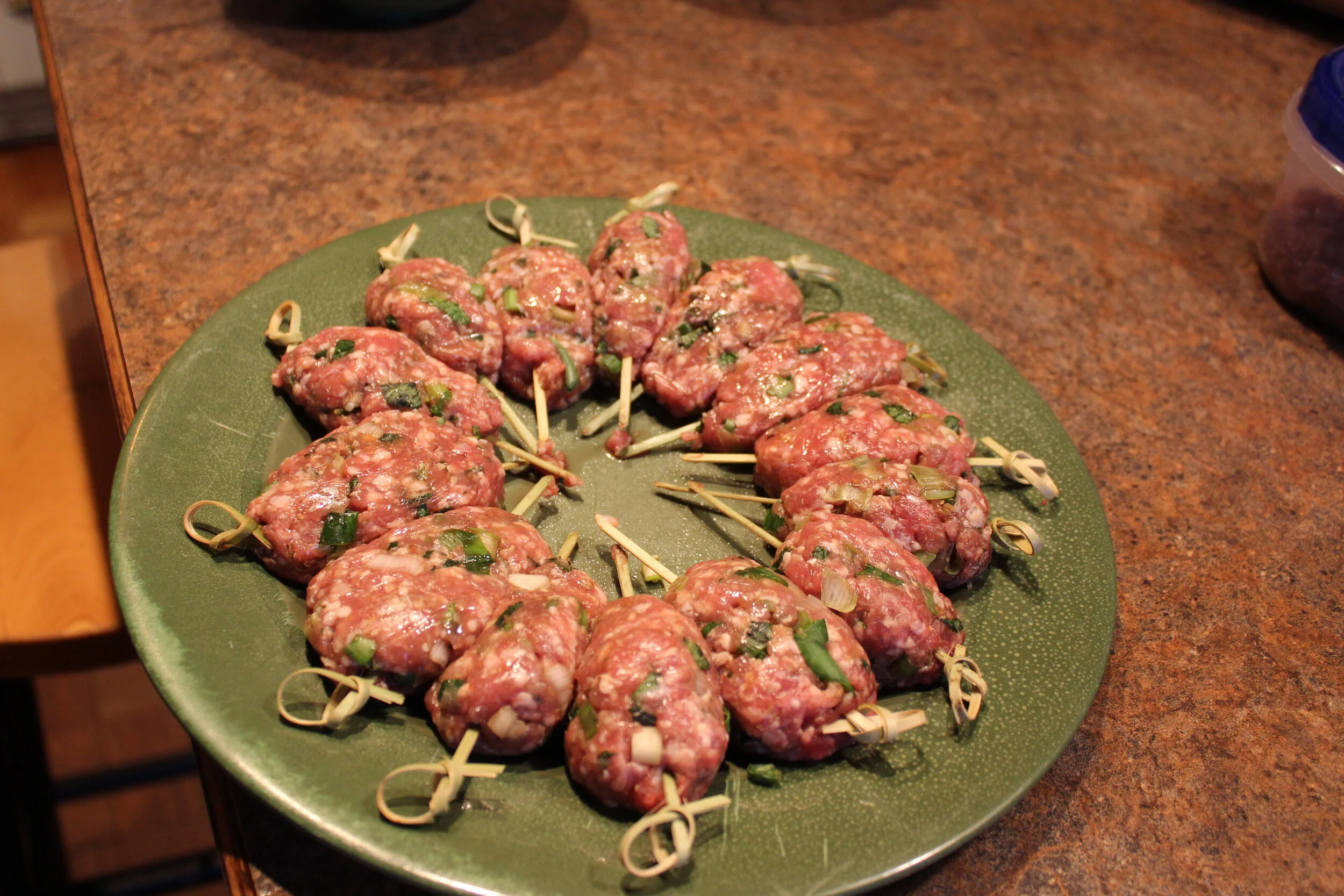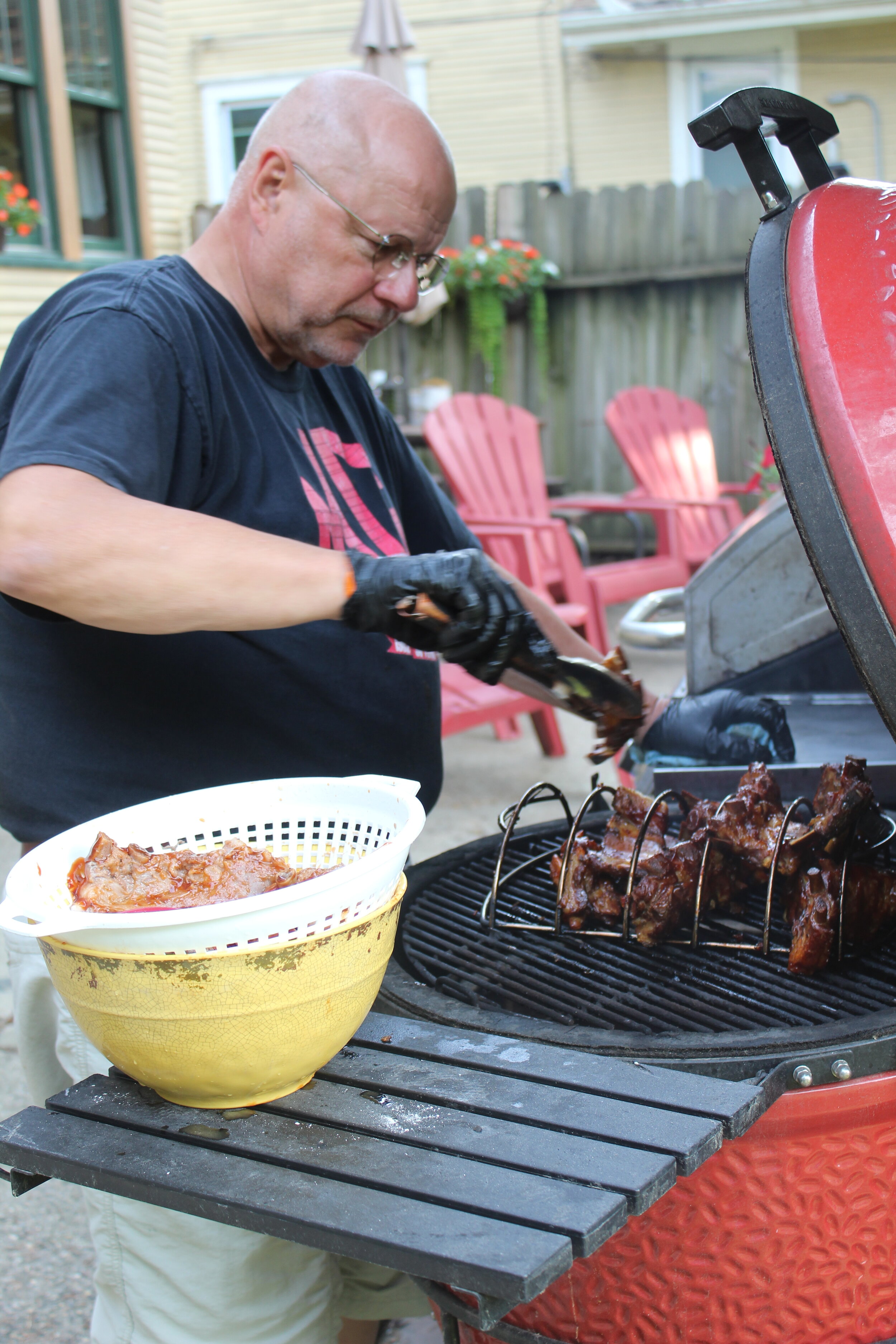How to Get Local Grown - In Mid Winter
Local grown in winter? C’mon. That’s crazy talk Why, there are no Farmers Markets. There are no gardens. I mean, really…
Yes, really! You CAN get local grown goods and make a great meal to boot!
To prove this point, I challenged myself to source locally grown goods. While I could cook the food myself, I decided to get my friend and great cook Leon Dawkins involved. Leon’s wife, Lori, is a good friend and, when Lori, our friend Shari and I gather at Leon and Lori’s house, Leon makes wonderful appetizers pairing it with the perfect wines.
Leon was game for this event which would be culminated by a local foods meal. But I am getting ahead of myself. First we have to source the foods.
Honestly, even in winter, it’s easier than you think! I sat down with pen and paper and made a list of local growers I could source the vegetables and meats.
Remember, this is mid-January when I’m making this list. I know growers aren’t going to have tomatoes or asparagus at this time. (Unless it’s hydroponically grown, which is an idea for a future challenge). So I turned my attention to local seasonal eating. For this time of year, root vegetables are king. Root vegetables include potatoes, squash and carrots, to name a few.
One vegetable grower stood out in my mind - Ida Valley Farm. Jeff and Jane Way of Garfield raise garden produce in two high tunnels and in garden plots. In the winter, they sell the root vegetables they harvest in fall and they raise micro greens year-round.
From Ida Valley Farm I purchased fingerling potatoes, blue Adirondack potatoes, micro greens and rainbow carrots. Of all the items, I left the blue Adirondacks for my own pantry. Leon would get the rest.
And for the meat, I went to Heritage Acres’ website. A slick process of online ordering and payment. I chose two chickens, chicken liver and ground lamb. (Leon is a fan of lamb. Lori, not so much. But she was game to give it try for this special meal! Thanks, Lori! )
When I broached the meal idea with Leon, I told him it would be like The Food Network’s show “Chopped.” But there wouldn’t be any chopping except for the vegetables. Okay, it was a poor Food Network show comparison since there was no mystery basket. Leon knew everything I was purchasing. I honestly couldn’t imagine giving him a mystery basket since all the meat items were frozen.
But this is more “real world.” You know what’s in the pantry, fridge and freezer, you just have to put it all together.
As a Mom and Grandmom, I recall the infamous Facebook status that says, “No one told me being an adult meant I would have to make a meal every night for the rest of my life!”
So Leon has processed the ingredients on hand (the local foods), looked at recipes and planned. Just like I do, only he has great recipes. I will share those later.
But first, the local items
But, when it comes to getting the local items that part is easy for you. You write a blog about it, after all. What about someone like me?
Here is what I did for some great Minnesota local food sourcing:
Farmers Markets. Okay, I know it’s mid-winter and most Farmers Markets are closed for the winter, but some communities have winter Farmers Markets. Root vegetables, jams, honey and more are featured at these markets. For years my brother sold eggs every Thursday afternoon at the Elbow Lake Community Center, for example.
No winter Farmers Market? Don’t despair! During the Farmers Market season, talk to the growers. Many have business cards or brochures about their farm with contact information included.
The Minnesota Grown Directory. The Minnesota Department of Agriculture has a Minnesota Grown program. Growers and cottage industries throughout the state can take part in the program which lists the farm’s information as well as contact info. The directory can be found online through the MDA website or, through that website you can order a paper copy of the directory.
I have utilized both methods, but enjoy my paper copy. This directory is well used. It’s dog-eared, contains gobs of notes and Post-It notes, as well. An updated version is created every year.
Growers are listed by region with an alphabetical listing and a listing of farm types from honey to beef or elk or chicken. There are listings for Minnesota wineries and apple growers. Get the directory. You won’t be disappointed! A fun find.
Social media including Instagram, Facebook, and Pinterest. Look for social media and local connections. For example, while I’d visited Ida Valley Farm at the Alexandria, MN Farmers Market a few years ago, I knew they had a Facebook page. A simple search for Ida Valley Farm and I was connected with the latest information on their operation.
I simply messaged them and we made the connection. Slick.
Watch for local foods everywhere. Local foods are closer than you think. During a recent grocery shop, I saw a jam made by a Moorhead, MN family. Local honey from Dan’s Honey was also there. And Camp Aquilla Syrup, gathered at Vergas, MN, was also available.
Sometimes you will see an “eggs for sale” sign when traveling through the countryside. One gal I know on Facebook often annouces she has eggs available for sale.
It took me a week longer to get my items, thanks to a winter snowstorm, but it was no problem for them to hold the items those few days. Remember, the meats were frozen.
It involved a road trip, but traveling was good and a fun time spent driving through the countryside and meeting up with the growers.
And then, the meal
Okay, I know where to look, but what about the meal?
More information about it, the meal, and all the preparations from grower information to the recipes, will be featured in upcoming The Local Growers posts.
That includes a feature on the cook, Leon!
The only guidelines Leon really had for this “challenge” was to plan a full meal. Okay, I helped out a bit with the dessert which was made by our mutual friend, Emily, and her cottage business Sugar High Bakery and Confections. She sources local for her baked items. And Sarah Thacker of Pass the Bread made the bread. She uses a sourdough base.
But more on them, also, in future posts.
Keep watching for more “The Meal” stories and remember to keep it local.






